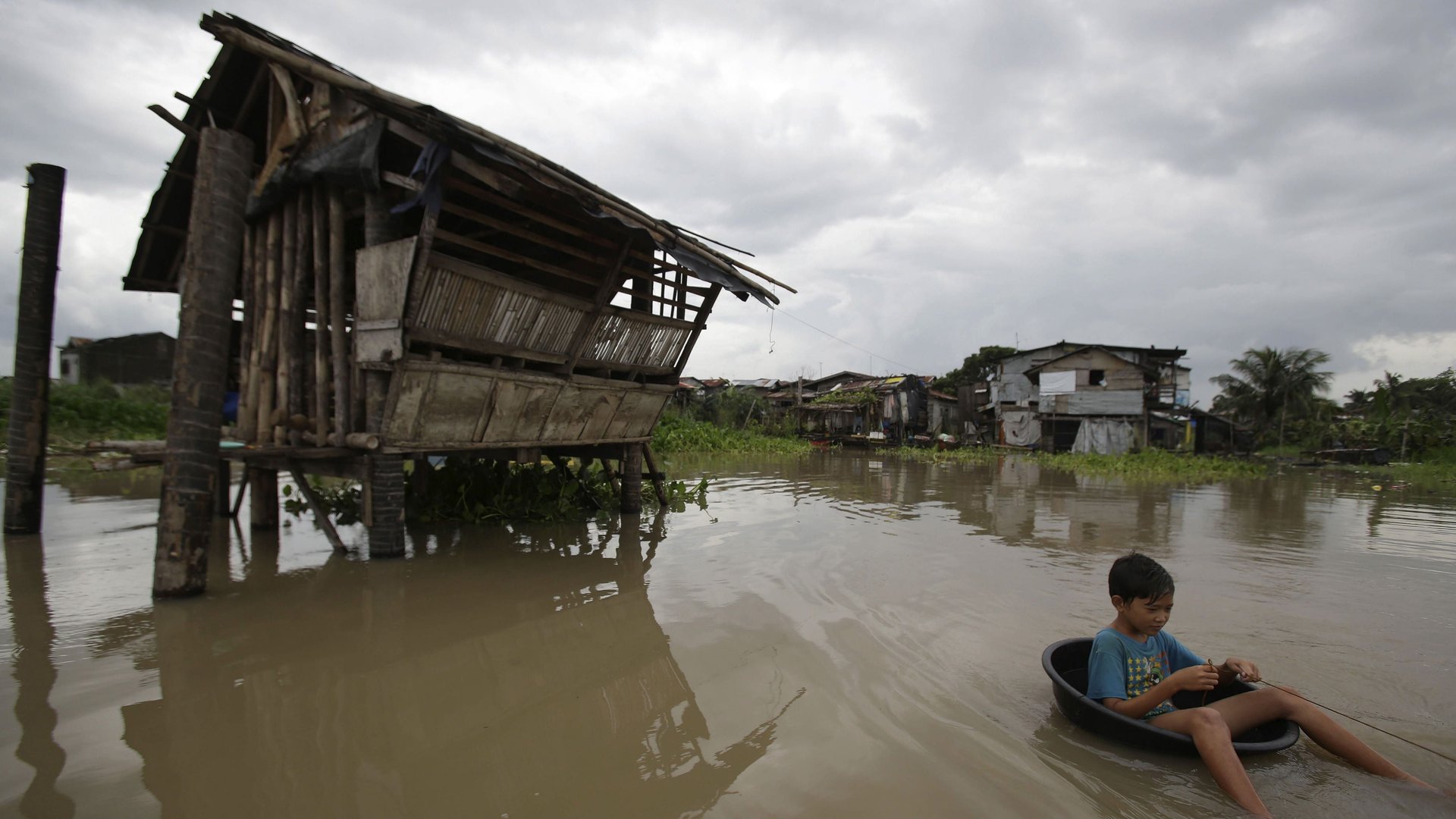More mobile phones mean fewer deaths from natural disasters
Fewer people were killed or affected by natural disasters than in any other year in the past decade, according to a report (pdf) released Oct. 17. In 2012, some 15,706 died, compared to 37,907 in 2011 or almost 304,474 casualties in 2010, according to the International Federation of Red Cross, IFRC, and Red Crescent Societies.


Fewer people were killed or affected by natural disasters than in any other year in the past decade, according to a report (pdf) released Oct. 17. In 2012, some 15,706 died, compared to 37,907 in 2011 or almost 304,474 casualties in 2010, according to the International Federation of Red Cross, IFRC, and Red Crescent Societies.
The smaller death toll is in part because last year didn’t see brutal disasters like the 2004 Indian Ocean tsunami that left over 230,000 dead in South and Southeast Asia, Cyclone Nargis in Myanmar in 2008, or the 2010 earthquake in Haiti, each of which killed over 100,000. But we can also thank cell phones for last year’s smaller disaster-related death toll, according to the IFRC report.
In the Philippines, for example, which is struck by about 20 typhoons a year and whose population is scattered over thousands of archipelagos, mobile phones have been especially helpful. (Today, the number of cell phone subscriptions outnumber people.) The country has set up a surveillance system to send disaster damage reports and other data to emergency health officials via text messages. Before Typhoon Bopha—a category 5 super typhoon with winds of 280 km/h (175 mph) landed last year, authorities were able to evacuate some 41,000 citizens as well as quickly rescue people after the storm struck, thanks to cell phones and other communication technology. Even though Bopha was the most powerful storm the country had experienced up to that point, its death toll is behind that of eight other storms that hit before 2012. So far this year, 11 people have been killed during the worst typhoon of the year.
The idea of “humanitarian technology” has been picking up steam over the past few years. There are 6.8 billion mobile phone subscribers in the world. And if proper planning is in place cell phones in particular could be one of the most effective means for authorities and rescue staff to communicate with the public during emergencies and natural disasters. (One caveat is that after disasters hit, communication infrastructure, including cell phone towers, is often knocked out of service.) Earlier this month, mobile phones helped relief workers in India coordinate one of the country’s largest evacuation efforts ever and helped citizens dodge the worst of Cyclone Phailin.
There’s room for more use of mobile phones in rural areas where people traditionally get their news from their neighbors and relatives. As more people in rural regions as well as in developing countries subscribe to cheap cell plans, they can get disaster and safety information directly and quickly. Moreover, locals—in both rural and urban areas—are usually responsible for the bulk of the rescue efforts during the first critical hours after a natural disaster. These de facto first responders would be further helped with phones that help them reach or consult with health workers and aid agencies.